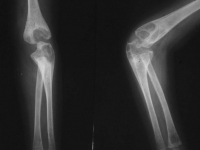defining its fundamental
Temperature 37.2 – reason to consult a doctor: what will tell subfebrile
 A serious illness that can develop in the body imperceptibly for the person himself can be “declared” by a slightly increased body temperature. Low-grade fever (37-37.5 ° C) can last for several weeks or months, but does not bother the person. Meanwhile, subfebrile condition can be a symptom of a sluggish inflammatory process or a serious disease.
A serious illness that can develop in the body imperceptibly for the person himself can be “declared” by a slightly increased body temperature. Low-grade fever (37-37.5 ° C) can last for several weeks or months, but does not bother the person. Meanwhile, subfebrile condition can be a symptom of a sluggish inflammatory process or a serious disease.
Body temperature: norm and deviation
So what is the norm and deviation from it, if we are talking about the temperature of the human body? The classic normal temperature of a healthy person is 36.6 ° C. However, these indicators are not always stable and may change under the influence of a number of factors. And this does not mean that something is wrong with you. Temperatures can vary from 35.5 to 37.4 ° C due to the influence of climate, biological rhythms, and time of day. Continue reading
What is bone tuberculosis? Causes, Symptoms and Consequences of the Illness
 Tuberculosis of bones is a disease of the musculoskeletal system of a person, which is characterized by the progressive destruction of bones. This disease leads to anatomical and functional disorders of the affected parts of the skeleton. Bovine tuberculosis is the most common form of tuberculosis after pulmonary tuberculosis. Often, the pathological process develops in the spine, but occurs in other parts of the musculoskeletal system.
Tuberculosis of bones is a disease of the musculoskeletal system of a person, which is characterized by the progressive destruction of bones. This disease leads to anatomical and functional disorders of the affected parts of the skeleton. Bovine tuberculosis is the most common form of tuberculosis after pulmonary tuberculosis. Often, the pathological process develops in the spine, but occurs in other parts of the musculoskeletal system.
Development of bone tuberculosis and its causes
The tuberculosis wand penetrates the spongy bone divisions and causes the primary cell (aphtha) that spreads to the joints and surrounding tissues and causes their destruction. Continue reading
Tetanus: be careful in the country
 In the summer, in the midst of the summer season, you need to be especially careful when taking time to take preventive measures to prevent infection with a dangerous disease like tetanus. This is an acute, deadly infectious disease, which is characterized by damage to the nervous system, a very likely fatal outcome. Tetanus bacillus enters the human body through mechanical damage to the skin and mucous membranes, so you should be careful during active country work.
In the summer, in the midst of the summer season, you need to be especially careful when taking time to take preventive measures to prevent infection with a dangerous disease like tetanus. This is an acute, deadly infectious disease, which is characterized by damage to the nervous system, a very likely fatal outcome. Tetanus bacillus enters the human body through mechanical damage to the skin and mucous membranes, so you should be careful during active country work.
How can you get tetanus?
The causative agent of tetanus is the spore-forming bacteria Clostridium tetani. They are resistant to disinfection, can be in the soil, on different objects. At one place these bacteria can persist for about 100 years. They are waiting for favorable conditions and are transformed into vegetative forms that produce an extremely dangerous poison. Continue reading


